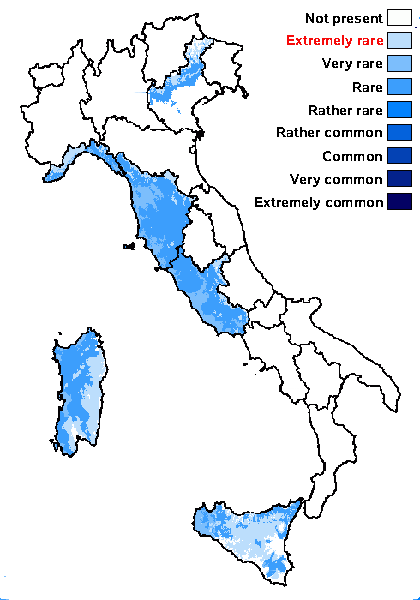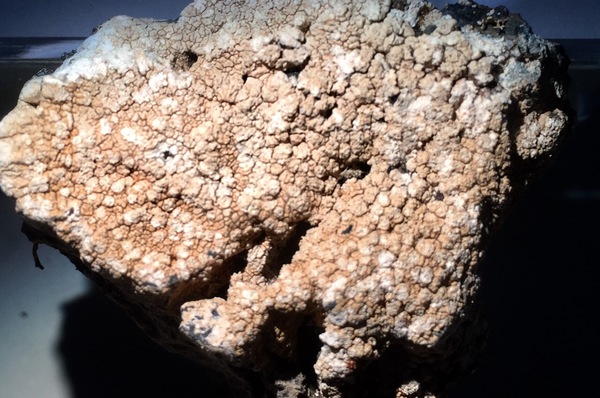Pertusaria amarescens Nyl.
Flora, 57: 311, 1874.
Synonyms: Pertusaria affinis Erichsen; Pertusaria coudercii Harm.; Pertusaria flavicans var. coudercii (Harm.) Erichsen; Pertusaria flavicans var. schistosa Erichsen
Distribution: N - Ven, Lig. C - Tosc, Laz (TSB 8630), Sar. S - Si (Ottonello & Romano 1997, Grillo 1998, Grillo & Caniglia 2004).
Description: Thallus crustose, episubstratic, rather thin, continuous to rimose, pale grey or whitish grey, sometimes with a yellowish tinge, at first radiately rimose, later rimose-areolate, sorediate. Soralia maculiform, 0.3-0.8 mm across, slightly paler than thallus, at first orbicular, then often confluent and diffuse, especially in central parts of thallus. Apothecia and pycnidia unknown. Spot tests: thallus K+ yellow, C+ orange, KC+ orange, P-; soralia P+ brick-red (slow reaction), UV+ pale orange and more or less spotted blue-white. Chemistry: thiophaninic, stictic, menegazziaic acids and variable amounts of norstictic acid. Note: on basic or slightly calciferous siliceous rocks. A poorly known and often misunderstood temperate taxon; some records could refer to P. flavicans, others to P. aspergilla. Here, except the recent record from Sicily, only records checked by Hanko (1983) and by myself are accepted.
Growth form: Crustose
Substrata: rocks
Photobiont: green algae other than Trentepohlia
Reproductive strategy: mainly asexual, by soredia, or soredia-like structures (e.g. blastidia)
Most common in areas with a humid-warm climate (e.g. most of Tyrrenian Italy)
Poorly known taxon in need of further study
Commonnes-rarity: (info)
Alpine belt: absent
Subalpine belt: absent
Oromediterranean belt: absent
Montane belt: extremely rare
Submediterranean belt: extremely rare
Padanian area: absent
Humid submediterranean belt: rare
Humid mediterranean belt: very rare
Dry mediterranean belt: absent

Predictive model
Herbarium samples
Growth form: Crustose
Substrata: rocks
Photobiont: green algae other than Trentepohlia
Reproductive strategy: mainly asexual, by soredia, or soredia-like structures (e.g. blastidia)
Most common in areas with a humid-warm climate (e.g. most of Tyrrenian Italy)
Poorly known taxon in need of further study
Commonnes-rarity: (info)
Alpine belt: absent
Subalpine belt: absent
Oromediterranean belt: absent
Montane belt: extremely rare
Submediterranean belt: extremely rare
Padanian area: absent
Humid submediterranean belt: rare
Humid mediterranean belt: very rare
Dry mediterranean belt: absent

Predictive model
| Herbarium samples |
 INDEX FUNGORUM
INDEX FUNGORUM
 GBIF
GBIF
 DOLICHENS
DOLICHENS



